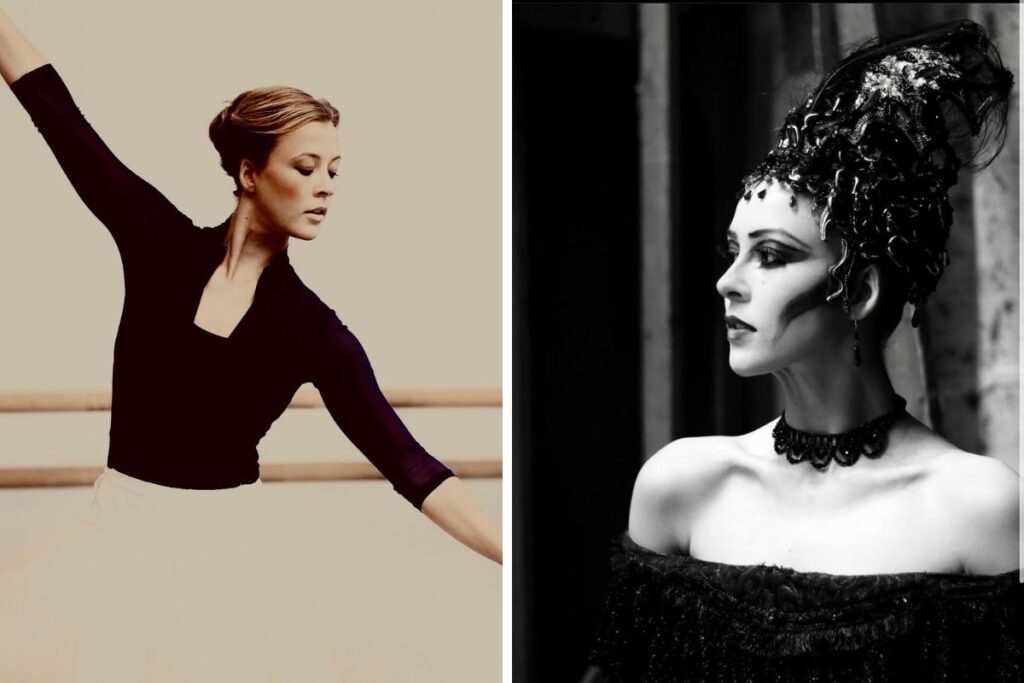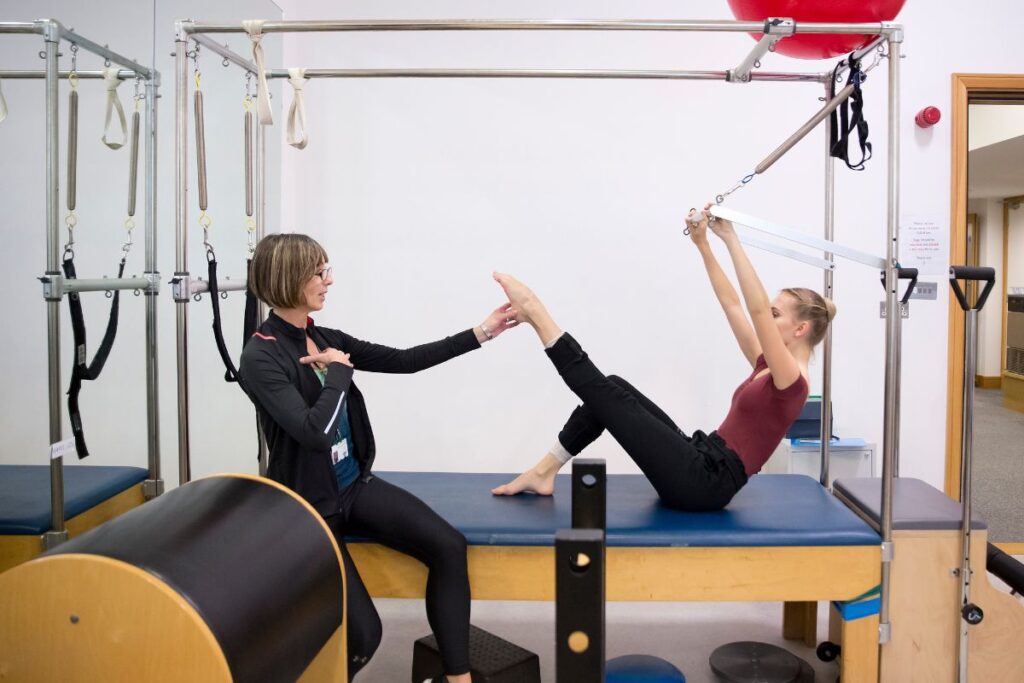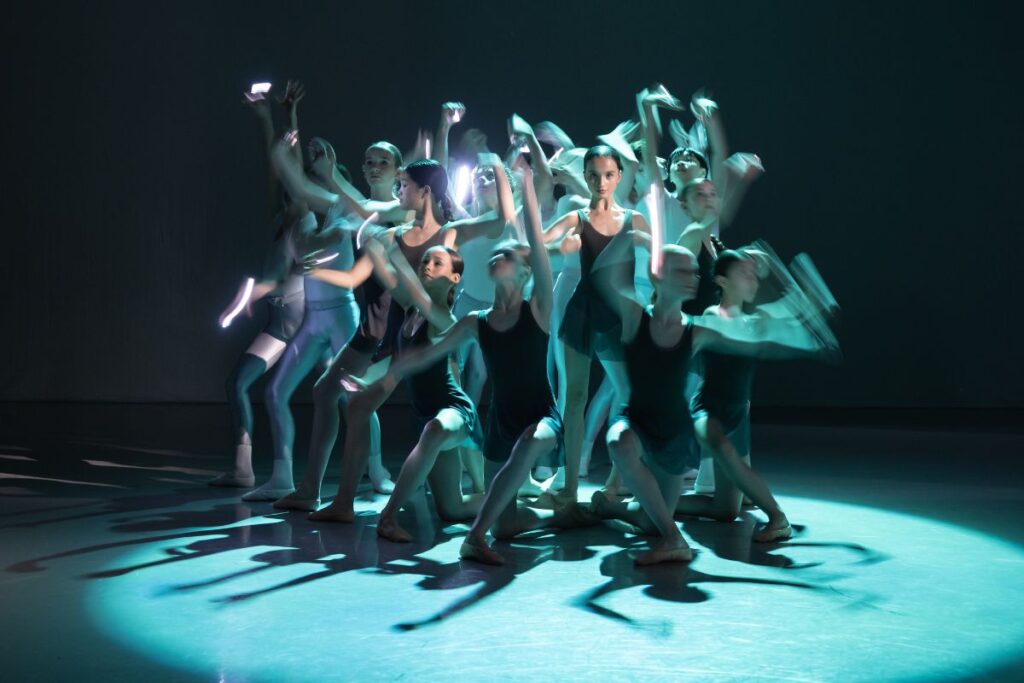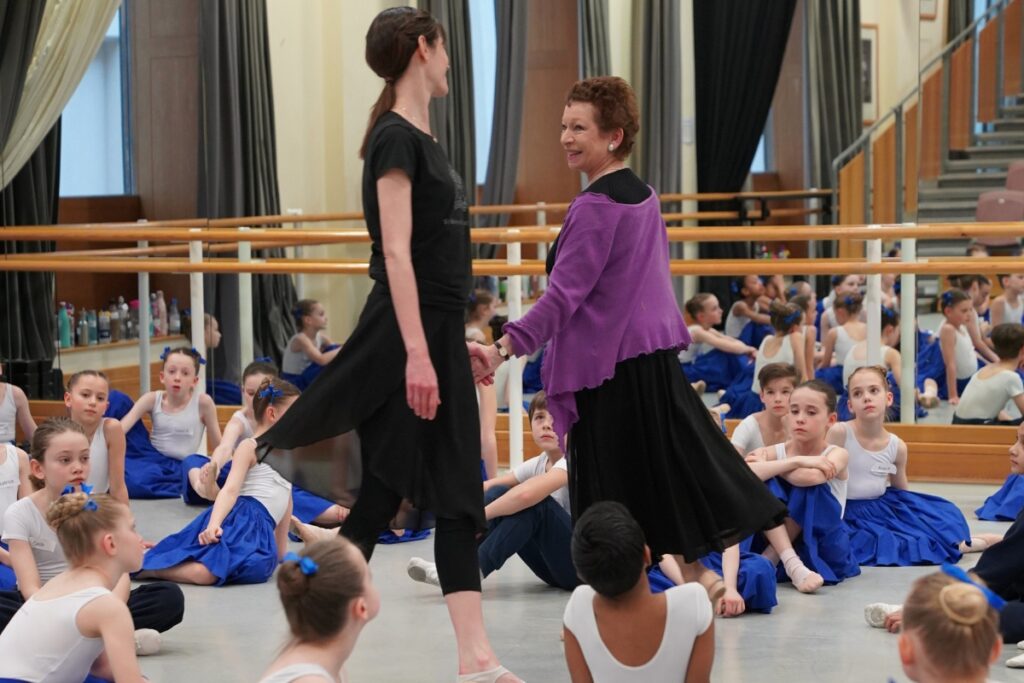Summer Performance spotlight: Vanessa Palmer on Les Patineurs
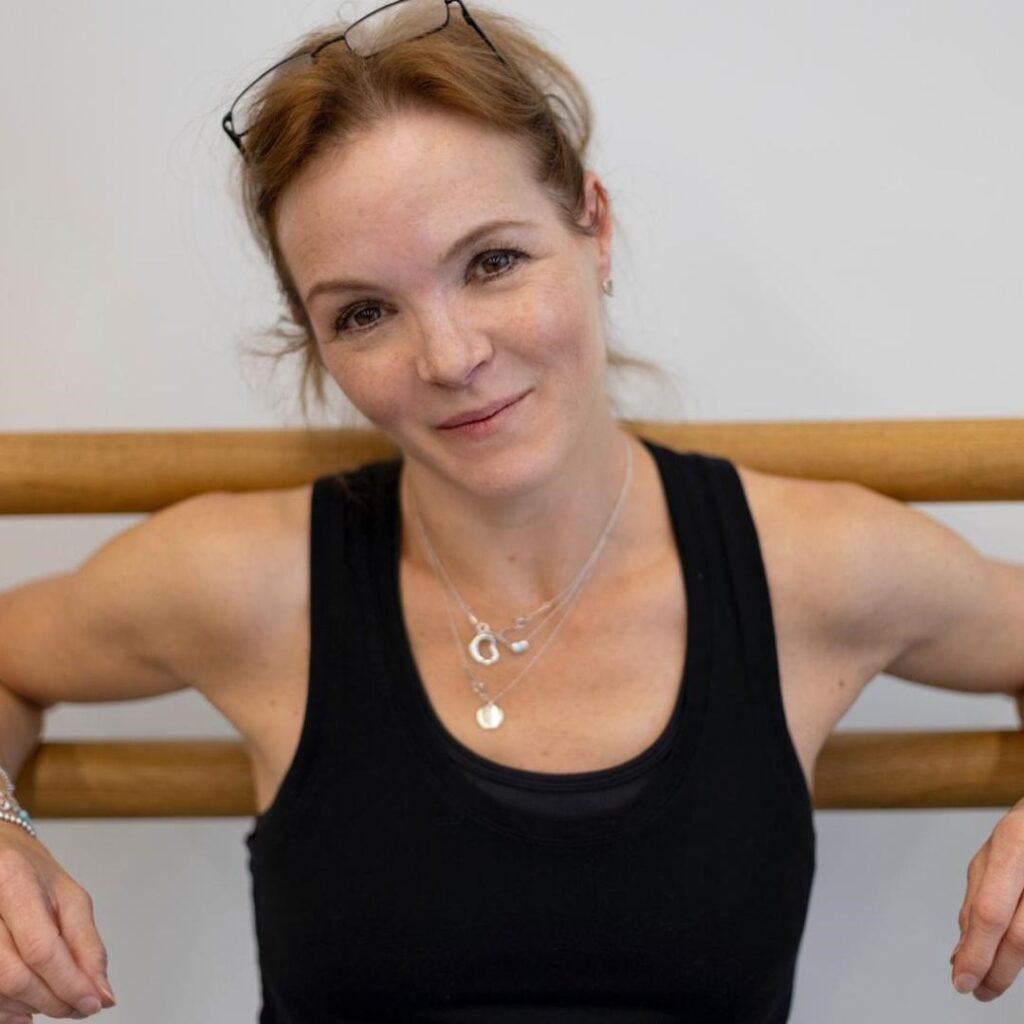
Former alumna of the School, Vanessa Palmer joined The Royal Ballet in 1989 before later moving up the ranks to Soloist and Assistant Ballet Mistress. She was awarded an I.S.T.D Fellowship and has completed the RAD Benesh Movement Notation for Ballet course. In 2019, Vanessa was asked by The Frederick Ashton Foundation to join the Ashton shadowing scheme as an Ashton répétiteur.
We are thrilled to welcome Vanessa back to the School this year to stage Les Patineurs for our annual Summer Performances, last performed by the School in 2016.
Choreographed in 1937, Les Patineurs is one of over one hundred works created by Sir Frederick Ashton. The amusing diversions of a party of ice-skaters are presented in virtuoso choreography demanding the best from all performers, from soloist to corps de ballet.
It was an honour to sit down with Vanessa to learn about her love and passion for Ashton’s repertoire, and her experience working with the students on this ballet.
When were you first introduced to Les Patineurs and how has your relationship with the ballet evolved over time?
It was something that I grew up watching as it was in the repertoire a lot more than it is today, but my relationship with the ballet really began when I joined The Royal Ballet as a member of the corps de ballet and was cast as one of the corps couples. Then when I became a soloist, I moved on to the Red Girls dance.
Now through my work with The Frederick Ashton Foundation, I’ve been delving into the archives of people’s notes, memories, video footage and notations that exist in order to consolidate an authentic version of the ballet. I’m discovering and uncovering the influences, observations and references to the ethos of the piece which I have absolutely adored.
Les Patineurs is known as a very charming and comical work, and one of Sir Frederick Ashton’s best-loved ballets. What do you love most about the piece and how it showcases Ashton’s trademark choreographic style?
I just love Ashton’s ballets, they are a passion of mine. It was the reason I wanted to dance. I wanted to be in The Royal Ballet because I wanted to dance in a Frederick Ashton ballet.
From a young girl, age six or seven, being taken to the Royal Opera House, it was always his ballets that I went to see predominantly, and I would come away and know all the steps because they felt familiar.
Ashton was interested in shapes and the architecture of a shape, and the relationship between the female and the male through their eye line and headline. He was interested in the invisible line that doesn’t exist because that creates the architecture.
There are so many influences, observations and references in Les Patineurs. For example, the blade of the skate is the arm position for the man. When I found that reference and saw the blade I remember thinking, ‘oh my goodness, that’s the man’s arm position.’ Then there’s the sharpness of the blade and realising that to cut a figure in the ice you must really move your foot side to side. You have to get down into the ice and this is reflected in the use of the chassé throughout the ballet.
The shape of the pond is created by the dancers. Every snowflake is individual and everything has an intricate pattern within that circle shape. There’s a moment in the corps de ballet towards the end where they make this sort of pattern where the men are in the centre, then they come out to the sides, and they go into the centre, almost like a kaleidoscope. This pattern again mimics the shape of a snowflake.
There’s also references to particular skating moves. Whether it’s a simple stand, the weightiness, smoothness and sharpness of the movement, or the crispness of the air, all of that comes into it.
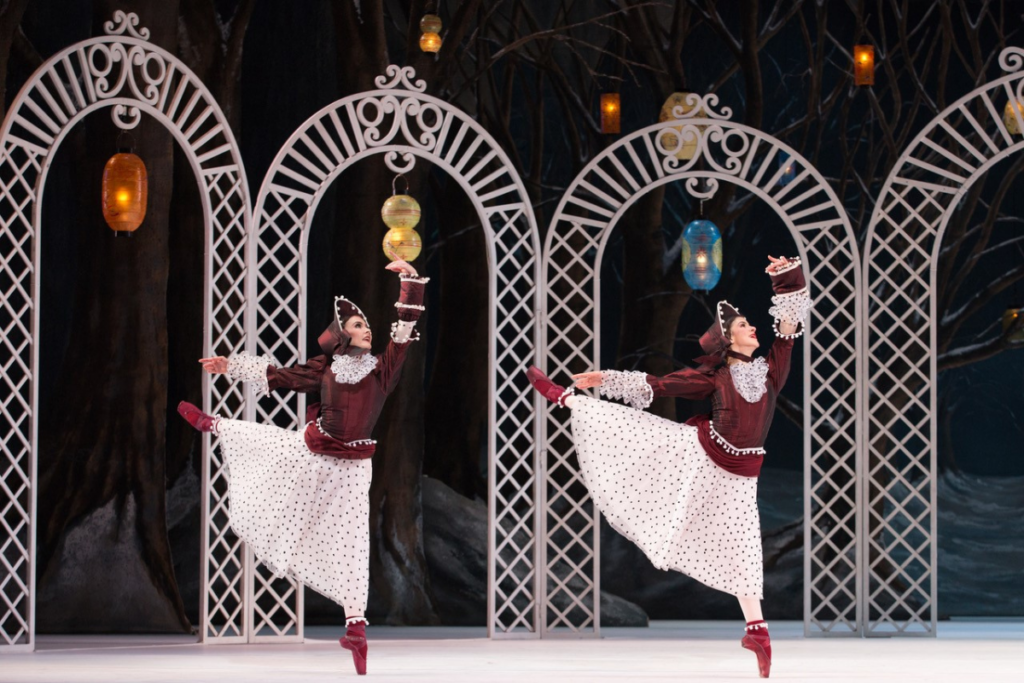
What have you enjoyed most about working with our students on this piece?
Working with these students has been an immense privilege. They’re an incredible group of individuals who are hungry for information. They have been an absolute joy and on board from day one. They have been like sponges. They came to rehearsals prepared and present, and open to my amendments. They are responsive and they instantly apply corrections. I could teach them for hours and hours. They inspire me and I’m going to miss working with them.
What was your approach to staging this piece with the students?
It all starts with the history and ethos behind the work, and identifying what you’re trying to portray, what you’re trying to feel, what you’re trying to sense, and what you’re trying to achieve.
I believe that when you learn something, you may know of it, you may have heard of it, you may have seen it, you may have watched it on YouTube, but when you go to learn something for the first time, you have to have as much information and history as possible.
I showed the students photos and quotes, and we listened to the music. I tried not to count the steps, and I was mindful of not giving the steps their classical names.
This production will be the version that the Foundation use moving forward so it has been a fantastic collaboration with the students to identify all the details that have been missing and hopefully create an authentic version by the end of it.
My niece used to be an ice skater so I brought in a pair of her ice skates so the students could feel the weight of the skate and imagine how it would feel to move with them on.
It has been a privilege for me to go beyond the teaching of the ballet and to explore more with the students.
Music is a very important part of your coaching, can you tell us about the music of this ballet and how have you incorporated that into rehearsals?
The music is the ballet. The ballet evolved through the thoughts and the natural movement that springs out of the music, so it is very important to make that part of the learning process.
The overture builds like a gust of cold, winter wind. It sort of blows you away and you can see the snow turn into a bit of a snowstorm, and then it opens and there you are on the frozen pond. It really transports you.
My job is to be aware of where to make the students listen. We focus on really hearing and trusting the musicality. I let the pianist play the music, they listen and then they dance the steps from the corner. For this group, I’ve not had to delve too deeply into it because they have been listening to the music on their own.
As an Ashton répétiteur, what do you hope the students gain from learning and performing Ashton’s choreography and what advice have you given them?
I hope that they enjoy the process of cementing what will now be this version of the ballet, endorsed by the Foundation.
There have been many moments of tweaking and amendments which is what happens when questions arise from rehearsals. I hope they’ve learnt that adaptation and being flexible is part of being a professional and they are very much aware of that, because I think I’ve tested that slightly. I hope that they have a deeper understanding of how to approach an Ashton ballet or solo as well.
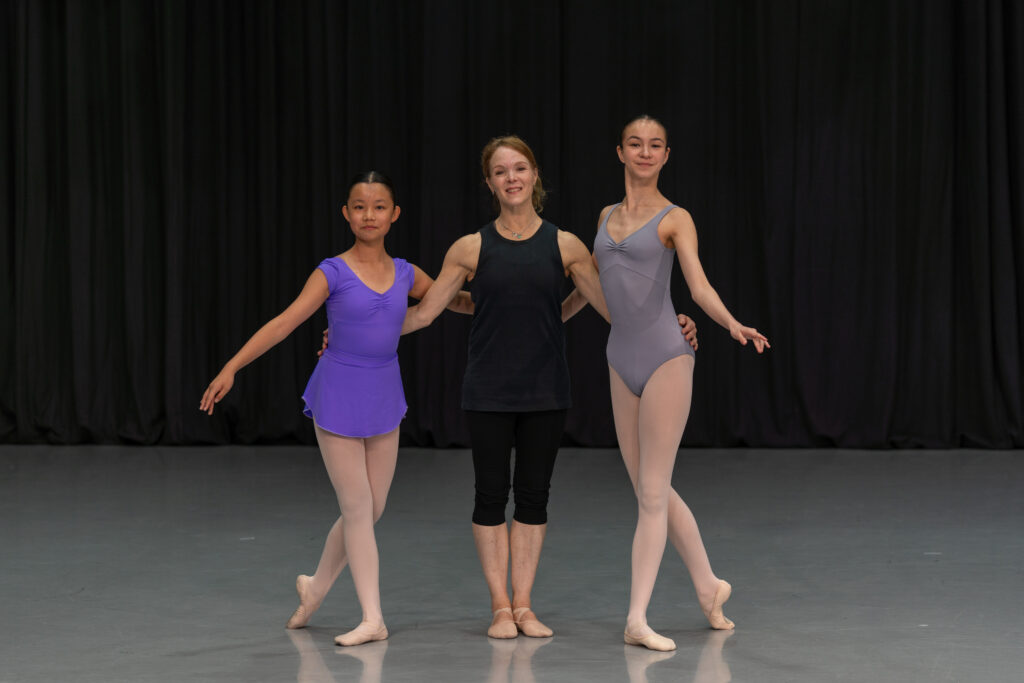
What can audiences expect from Les Patineurs and what do you hope they take away from the performance?
Les Patineurs is musical, tasteful, elegant, charming and witty. I hope that when the curtain opens and the picture of the frozen pond comes alive, that they get swept away by the charm and brilliance of the ballet, of Sir Frederick Ashton and of these young dancers, and realise why it’s so important to preserve these pieces.
This ballet is like a breath of fresh air. I hope audiences appreciate the detail, even if they don’t know what they’re watching, and leave thinking that was charming, funny, brilliant, and uplifting.
During your time at the School, you were chosen by Sir Frederick Ashton to create the role of Princess Elizabeth, in what was to be his swansong, The Nursery Suite, for a birthday gala in honour of the Queen Mother. What was it like working with him in the studio?
It was like my dream had come true. I remember our first rehearsal, Philip Gannon played the music and Sir Frederick Ashton walked in with a cigarette in hand. He hadn’t worked with children much before and told us, ‘you’re in a park, you’re happy, you’re playing.’ That was it, we started with that and just evolved from there. When it was over, we knew it was something special having been in that room. It was such a privilege, at the age of 16, to be able to dance for him.
Looking back, those experiences really shaped me. Here I am now, and it feels full circle passing on what I learned to the next generation.
The Frederick Ashton Foundation, a registered charity working independently of, but in close association with, The Royal Ballet, exists to perpetuate the legacy of Frederick Ashton and his ballets. Learn more here: www.frederickashton.org.uk.


